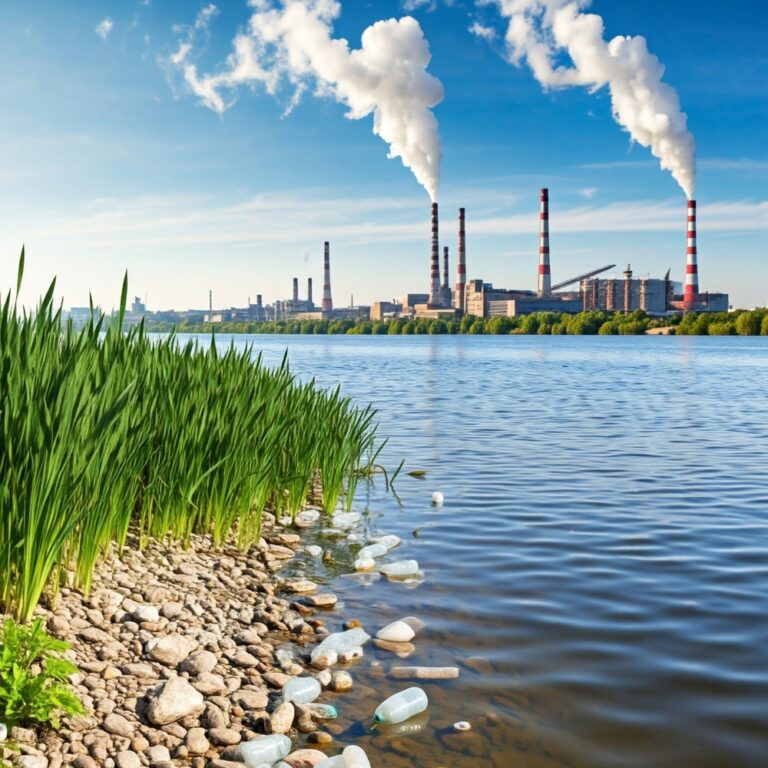Across the world, industrialization, urbanization, and human negligence have left a devastating environmental toll, particularly on waterways and ecosystems. Yet, amidst these challenges, remarkable stories of resilience and restoration shine as examples of what can be achieved when communities, governments, and organizations come together to prioritize environmental health. From once-dead rivers to recovering bays and regions plagued by pollution, these success stories offer hope and valuable lessons for addressing environmental degradation.
The Revival of the River Thames
In the 1950s, the River Thames in London was declared biologically dead—a sobering symbol of unchecked industrialization. Years of industrial discharges, untreated sewage, and urban runoff had transformed this iconic river into a toxic, oxygen-deprived waterway incapable of supporting life. However, the story of the Thames took a transformative turn in the 1960s with a series of environmental reforms and modern infrastructure investments.
London’s Clean Thames Initiative, coupled with new sewage treatment facilities, drastically reduced pollution levels. The introduction of the 1972 Clean Water Act and ongoing habitat restoration projects supported biodiversity recovery, creating a sustainable foundation for the river’s health. Today, the Thames boasts over 125 species of fish, as well as seals, porpoises, and a diverse array of birdlife. This remarkable turnaround underscores the power of regulatory frameworks, modern technology, and community action in restoring ecosystems, even in heavily urbanized areas.
Cleveland’s Cuyahoga River
The Cuyahoga River in Cleveland, Ohio, was once infamous for its pollution—so severe that the river literally caught fire multiple times. The 1969 fire, fueled by unchecked chemical waste disposal and oil slicks, became a national rallying point for environmental reform in the United States. Although not the first or the most serious fire on the Cuyahoga, the 1969 event happened to be reported in the same newspapers that covered the first Moon Landing, and so attracted widespread attention as a stark contrast in humanity’s achievements. Public outrage over the state of the Cuyahoga contributed to the creation of the Environmental Protection Agencye in 1970 and the passage of the Clean Water Act of 1972 – watershed moments in U.S. environmental policy.
Since then, substantial investments in wastewater treatment plants, stricter industrial regulations, and dam removals have restored water flow and fish migration in the river. The Cuyahoga is now a thriving hub of recreational activities, including kayaking and birdwatching. Its waters support diverse fish species, including steelhead trout, highlighting how robust legislation and community engagement can breathe life back into even the most polluted environments.
Healing Minamata Bay
Few environmental disasters are as haunting as the mercury poisoning of Minamata Bay in Japan. For years, untreated industrial wastewater from the Chisso Corporation discharged toxic mercury into the bay, bioaccumulating in fish and shellfish. Thousands of local residents who consumed these contaminated foods developed Minamata disease, a debilitating neurological condition.
The restoration of Minamata Bay began in earnest in the 1970s, driven by strict industrial regulations and environmental cleanup efforts. Dredging of contaminated sediments, coupled with stopping mercury discharge, played a critical role in reviving the ecosystem. Health initiatives supported affected communities, while ecological monitoring ensured sustainable recovery. Today, Minamata Bay supports fishing activities once again and stands as a poignant reminder of the importance of corporate accountability and rigorous environmental protections.
Reclaiming the “Black Triangle”
The “Black Triangle,” a heavily industrialized region at the borders of Germany, Poland, and the Czech Republic, became synonymous with pollution in the mid-20th century. Heavy coal mining and lignite burning emitted vast amounts of sulfur dioxide, causing acid rain that devastated forests, rivers, and soils. The collapse of communist regimes in the late 1980s and early 1990s ushered in an era of environmental reform in this region.
Governments began closing outdated coal plants and investing in cleaner energy sources, while sulfur dioxide scrubbers were installed in operational facilities. Reforestation projects helped restore the region’s forests, and international cooperation under the United Nations’ Convention on Long-Range Transboundary Air Pollution further reduced acid rain impacts. While full restoration will take decades, biodiversity in the Black Triangle’s ecosystems is gradually recovering, offering hope for other regions burdened by industrial pollution.
Revitalizing the Ganges River
The Ganges River in India, considered sacred by millions, has long been plagued by severe pollution. Untreated sewage, industrial waste, agricultural runoff, and religious offerings have contributed to its contamination, rendering large stretches of the river unsafe for drinking or sustaining aquatic life. Recognizing the urgency of the situation, India launched the Namami Gange Programme in 2014, one of the largest river restoration efforts in the world.
This ambitious initiative combines infrastructure development, public awareness campaigns, and biodiversity conservation. Over 350 sewage treatment plants have been constructed or upgraded to intercept waste before it enters the river. Community-driven afforestation projects and solid waste management efforts have also played a role. While challenges remain, particularly with enforcement, the program has significantly improved water quality in certain areas and revitalized local ecosystems. The protection of species like the Gangetic dolphin symbolizes a broader commitment to restoring the river’s ecological and cultural significance.
A Shared Responsibility
These global examples of environmental restoration demonstrate that even the most degraded ecosystems can recover so long as sustained effort, political will, and community engagement is brought to bear. Whether it is reviving biologically dead rivers or reversing the effects of acid rain, these success stories serve as powerful reminders of what we can achieve when sustainability and accountability are prioritized.
Stay in touch to get more updates & news on Vents Buzz!
